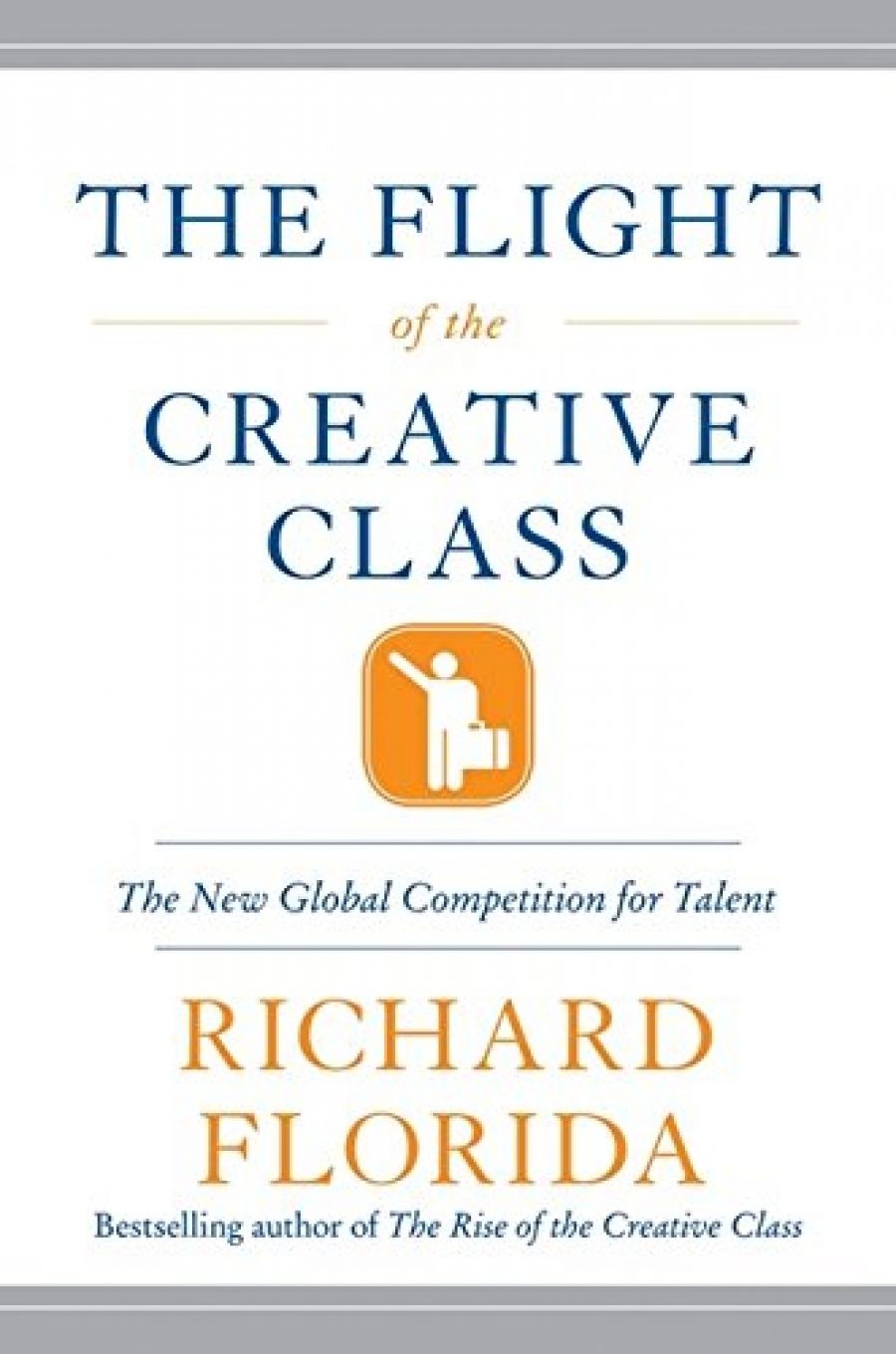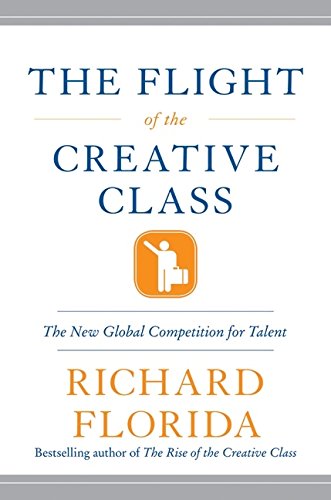
- Free Article: No
- Contents Category: Economics
- Review Article: Yes
- Article Title: The pattern in the index
- Online Only: No
- Custom Highlight Text:
When Richard Florida, the peripatetic celebrity academic from George Mason University, was in Australia to promote The Rise of the Creative Class (2002), he described Sydney as one of a dynamic new generation of cities that is attracting global talent. The following year, as a guest of the Melbourne Fashion Festival, he included Melbourne with Helsinki, Stockholm and Minneapolis–St Paul as models of creative and inclusive societies. On a later visit to New Zealand, he observed that the Lord of the Rings movies catalysed a new technology and entertainment industry for Wellington, earning it the reputation as a creative city. Is there a pattern here?
- Book 1 Title: The Flight of the Creative Class
- Book 1 Biblio: HarperBusiness, $39.95 hb, 326 pp
- Book 1 Cover Small (400 x 600):

Yet just three years later, in The Flight of the Creative Class, Florida warns that America’s economic future is under threat. Since 9/11 a ‘Reverse Brain Drain’ has meant that the US is losing its best and brightest to other parts of the globe. As a result, the US’s global leadership in innovation and prosperity is no longer assured. Unless business and political leaders recognise the need to support education, technology, research and development, and community building, Florida predicts that the trend will continue and America’s economic dominance will be challenged.
Of the two books, Rise offers a more careful and better-organised analysis. However, for those who haven’t read it, the first few chapters of Flight rehearse the arguments. Two distinct societies have emerged. One is creative and diverse – a cosmopolitan mix of high-tech people, bohemians, scientists and engineers, the media and the professions: the creative class. The other is a more close-knit society of working people and rural dwellers: the service class. And Florida sometimes refers to a third group: the manufacturing class.
Although the creative class comprises only thirty per cent of the US workforce, it earns nearly half of the country’s wages and is characterised by expert thinking and complex communication. Creative workers employed in creative occupations are responsible for wealth generation. However, at pains to counter-attacks that he is élitist, Florida explains that all people are creative and that the way a community can attract jobs and economic prosperity is to engage the creativity of everyone in that community, not just those in creative class jobs.
To evaluate a region’s position in the Creative Economy, Florida has devised a Creativity Index. Four equally weighted factors produce the Index: the creative class share of the workforce; innovation as measured by patents per capita; the presence of high-tech industries; and diversity as measured by the number of gays. His analysis has found a correlation between places open to immigrants, artists, gays and bohemians, and socio-economic and racial integration and economic growth. Of the four, it comes as no surprise that the Gay Index has provoked the most interest.
In The Flight of the Creative Class, Florida explores why creative people are leaving the US and asks if they are opting for greener creative pastures. Not shy of making big claims, Florida warns that the US is facing its greatest challenge since the Industrial Revolution: the new global competition for talent. As the global talent pool, once the province of the US and the source of its prosperity, has begun to disperse around the globe, the measure of a successful economy will revolve around a nation’s ability to mobilise, attract and retain human creative talent. Historically, says Florida, America’s openness to new ideas has allowed it to dominate the global competition for talent. However, since the closing of the US after 9/11, the number of green cards issued has fallen, the number of foreign students’ applications has declined, the religious right has strongly opposed gay rights, and US companies are going offshore to recruit talent. The result is a cost to the US economy.
Economists have long recognised technology and talent as the key drivers of economic growth, but Florida adds the idea of ‘flows’ – the mobility of people and ideas. It is the open and inclusive societies that are likely to mobilise the creative talents of people. However, according to his Global Creativity Index, the US is no longer the undisputed leader of innovation and openness: it is positioned fourth behind Sweden, Japan and Finland. Australia is in the next group, described as also doing well and unlikely to be surpassed by emerging giants such as India and China.
In the last chapter, Florida explains how to build a creative society. To make the transition from industrial to creative societies, countries need to invest in people, to build up the creative capital, and to remain open and tolerant. It can’t be a top-down plan; it has to emerge organically from the insights, efforts and energies of varied groups of people and organisations working on the concerns of a collective future. Most importantly, there has to be investment in research and development. The regions that succeed will be those that are magnets for the highly educated, highly mobile, innovative people that high-wage, high-growth companies need to hire. Cities that attract the creative class welcome newcomers, offer a wide range of lifestyle amenities, celebrate their diversity and see their people as creative. They have a strong urban core and universities that attract young people and new ideas.
When Florida admonishes the US for not investing sufficiently in universities and research centres, somewhat ironically he holds up Australia as an example of a country that has invested heavily in universities and research centres, and that nurtures creativity through open immigration and urban planning. But as readers well know, many creative Australians are leaving the country, the government is hostile to immigrants, opposed to gay marriage, and has cut funding to research and development, the arts and the universities.
Florida argues for measures as large scale as the New Deal and for innovative kinds of social institutions and policies. As the political class is ‘clueless’, he leaves it to the creative class to produce the blueprint. It’s a call for creativity but without the detail. When ideas about complex cultural and social change are reduced to ‘the three Ts of economic development’, it’s difficult not to be a little sceptical.


Comments powered by CComment